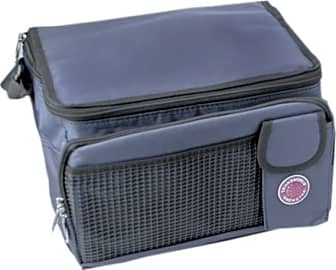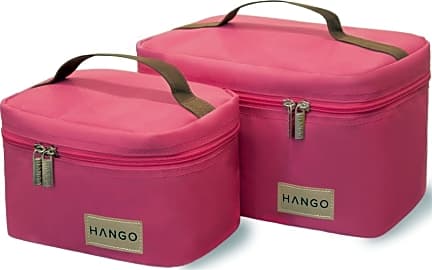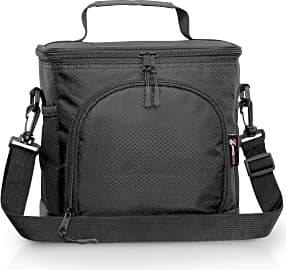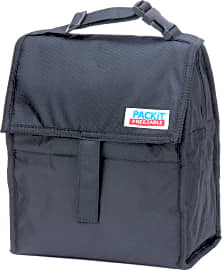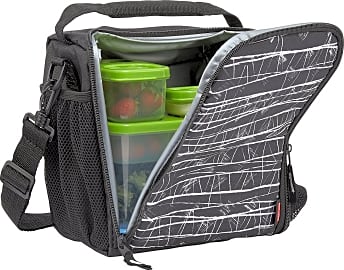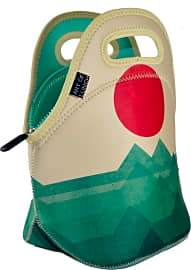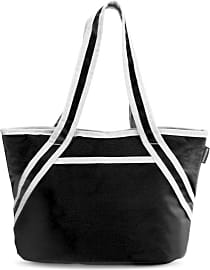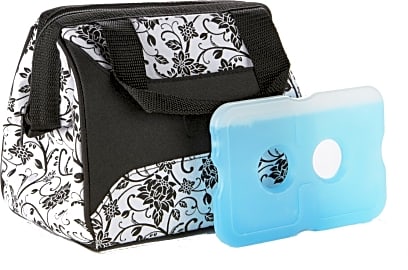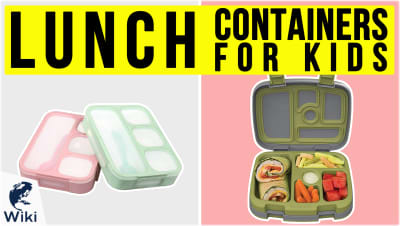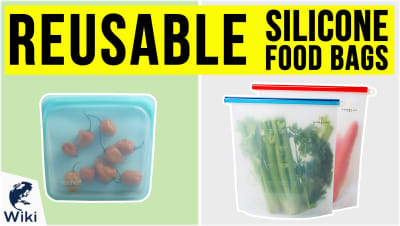The 10 Best Insulated Lunch Bags

This wiki has been updated 40 times since it was first published in February of 2016. If you want to put aside a little extra money each year, a smart way to do so is to make your own meals for work or school, rather than buy them when out. Check out these stylish, insulated lunch bags that are packed with features to keep your food organized and fresh for hours. They will let you enjoy something healthy, too, instead of grabbing a greasy takeout, for a double win. When users buy our independently chosen editorial picks, we may earn commissions to help fund the Wiki.
Editor's Notes
April 23, 2019:
We wanted to include models that have all the features one needs for fresh food on-the-go. With the Wildkin 52119, even hot meals are an option since it includes a microwave-safe container, so feel free to bring last night's pasta to the office for reheating without worry of using the questionable plates in the break room. Meanwhile, the Mier Picnic has enough room for a couple of meals, two exterior pockets for things like utensils and napkins, and outer bungee straps for quick snacks, meaning even if you're on an all-day hike, you'll be able to bring along everything you need. One of the perks of packing a lunch in these bags is you can do away with unsightly paper sacks. We wanted to capitalize on that benefit by including some truly stylish options, like the Art of Lunch Tote, for those who love creative items that are both inspirational and functional, and the Hydracentials Tote, which really looks like a regular purse and will go with most attire. When keeping items cold means the difference between a good day and a ruined meal, some of our impressively-chilling options will come in handy, like the PackIt Freezable, with its built-in freezable gel liner, and the PwrXtreme PX-001, which can keep items cold for up to eight hours.
The Benefits Of Using An Insulated Lunch Bag
If restaurants nearby have nothing the appetite is craving, the only option is to choose the least unappealing option.
Fare at school cafeteria is not the pinnacle of great food. Equally as sad is the vending machine at the office. As an adult, the best that can be done is to travel to the nearest fast food establishment, though this trip comes with its own inherent risks. Bringing a lunch to work or school in an insulated lunch bag provides many benefits over traditional lunches.
One of the most obvious benefits of packing a lunch is the relative cost. When purchasing from any food establishment, the price of the meal reflects not only the cost of the food itself, but also the cost of the labor it takes to make the food, the utilities used to cook the food, and an extremely large markup to pay the business' mortgage and still make a profit. When packing a lunch in an insulated lunch bag, the only costs are the lower markups found at grocery stores and the time it takes for you to make it.
As time is always of the essence, many people who disdain packing their own lunch point out how long it takes to create their own meal. While cutting into free time to make a lunch may seem inconvenient, it pales in comparison to the time it takes to purchase a meal every day. Plenty of time is spent walking to the car, driving to and from the restaurant, waiting in line, ordering food, and then waiting for it to be cooked. With an insulated lunch bag, the only effort you exert to enjoy a delicious meal is opening the bag itself.
One of the greatest benefits of packed lunches is the versatility of meal options. At the school or office there may not be many food choices. If restaurants nearby have nothing the appetite is craving, the only option is to choose the least unappealing option. When creating a lunch to bring to work or school, the only limit is the ingredients in the house. Insulated lunch bags offer more protection to the foods within, as well, helping to keep refrigerated foods at desirably low temperatures.
How Important Is The Lunch Break?
In the Western world, there is a focus on driven, goal-oriented workers who get the job done. These passionate workers often push past limitations and work long hours to meet deadlines. There is one mistake that many career-oriented people make that could be more costly than any other: skipping a lunch break.
The problem is that this seemingly helpful act actually kills productivity.
Only one in five workers report taking a lunch break on a daily basis. This means 80 percent of employees are skipping meal periods in order to be more productive. The problem is that this seemingly helpful act actually kills productivity. The act of taking small breaks throughout the day, such as lunch breaks, actually helps the brain recuperate. Rather than adding more stimulants like caffeine to the body, allowing the body to relax and enjoy a break can increase productivity without the jitters or an afternoon crash.
The average lunch break may not seem like a meditation, but the benefits are much the same. When eating a meal without outside distractions such as cell phones or televisions, the brain focuses on one thing: the meal. This simple practice of mindfulness can have remarkable effects on the brain, such as increasing the levels of alpha and theta waves which contribute to feelings of relaxation and alertness.
What To Pack In An Insulated Lunch Bag
As necessary as the lunch break is to the body, it is just as important to eat the type of foods which empower optimal health. Especially at work, eating brain food is vital to success. Supplying the brain with optimal energy sources is simple and delicious, and can lead to increased productivity and energy levels. The brain consists of primarily water, protein, and fat. It follows that a healthy brain needs high levels of these three key ingredients.
Depleted energy levels can be easily replenished with healthy fats.
Proper hydration is the basic foundation of health. Water is required in almost every cellular function, and helps to eliminate waste matter and toxins from the body through the urine. In the brain, water works much the same way. In addition to removing toxins from the grey matter, water also provides the cells oxygen and cushions the brain from impact against the skull.
In the work or school environment, nothing is more taxed than the brain. Depleted energy levels can be easily replenished with healthy fats. For this reason, fat intake may be the most important dietary factor for healthy cognitive function. Dietary intake of both unsaturated fats like omega-3 fatty acids and healthy saturated fats such as medium chain triglycerides has shown to be effective at boosting brain function in multiple studies.
Equipping the brain with healthy proteins may be the easiest of the three. Dietary sources include lean meats, eggs, cheese, nuts, and even many vegetables, making them easy to include in any meal plan.


